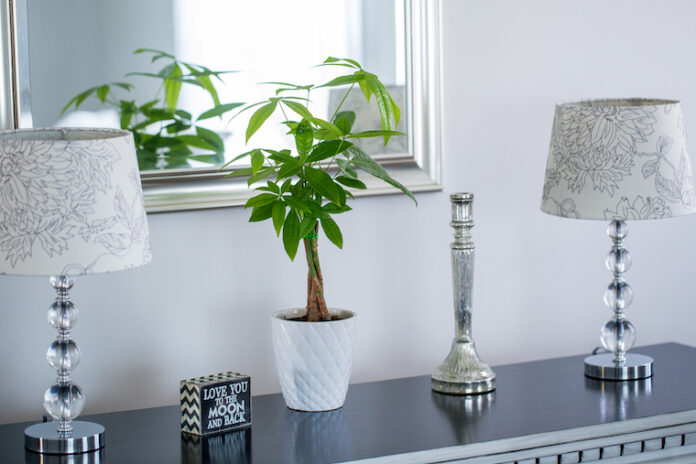Money trees are a very unique type of plant that are easy to identify due to their unique ‘braided’ trunk. Although they were originally from Central and South America, nowadays they are popular throughout the world both as an interesting tropical houseplant as well as a symbol of luck.
It should be noted that in its native habitat, money trees can actually grow up to 60 feet tall any often don’t have the ‘braided trunk’ that they are known for. The trunk is actually braided by cultivators during its growth in the nursery.
Although money trees aren’t particularly hard to care for, there are some basics that you should know.
Basics of Money Tree Care
To make sure that your money tree is healthy and grows well, there are some factors that you need to consider:
- Place it in bright, indirect light as too much direct light could scorch the leaves. If possible try to rotate your plant when you water it so that it is sunned evenly.
- Make sure the environment is warm – ideally between 65 to 80 degrees Fahrenheit.
- Water infrequently but thoroughly so that water starts to flow out of the drainage hole. Typically you should water the money tree once every week or two weeks, so that the top 2 to 4 inches of soil dry out.
- Give it some extra humidity using a humidifier or pebble tray. Alternatively you could mist its leaves from time to time.
- Add fertilizer once a month during spring and summer, but not winter. It is recommended that you use a water-soluble, well-balanced fertilizer at half-strength.
If you follow these steps you should be able to give your money tree all the care that it needs to thrive. Just keep in mind that it is perfectly normal if some leaves drop when you first move it to a new location, and it will acclimatize soon enough.
Common Problems
Money trees are quite hardy, but there are some common problems that you should be aware of:
- Root rot that is caused by overwatering or soil that isn’t well-draining.
- Discolored and scorched leaves due to too much exposure to direct sunlight.
- Leaf loss that is often due to shock or draft exposure.
- Insect infestations by scale insects, mealybugs or aphids that can be treated with systematic insect control.
To be perfectly honest most of these issues aren’t too difficult to tackle – especially if you’re aware of them and spot them early on.
Braiding and Pruning
In most cases you don’t have to braid your money tree as it would already have been braided by the nursery when you bought it. However if you plan to do it yourself you’ll need multiple money plants and will have to gently weave the trunks together and tie them loosely with a string – then continue to repeat the process as the trees grow.
While braiding may not be necessary – pruning definitely is. As a rule you should keep an eye out for any leaves that are dead or damaged, and snip them off at once. Aside from that you can also prune the money tree as you prefer to shape it or limit its growth.
Final Words
With a little bit of love and care, your money tree should grow well and become a lush and unique houseplant. In fact you may even decide to propagate it eventually, which is normally done by taking a cutting from it. If you do go down that route just remember that you’ll need to propagate several trees and weave their trunks together if you want to form the iconic money tree pattern.




















